F1: In Loving Memory Of The Blockbuster
Joseph Kosinski's F1 is an obituary posing as a hymn. It's designed to make us realise that this is the last gasp of superstardom in an age where influence is a profession rather than a halo.
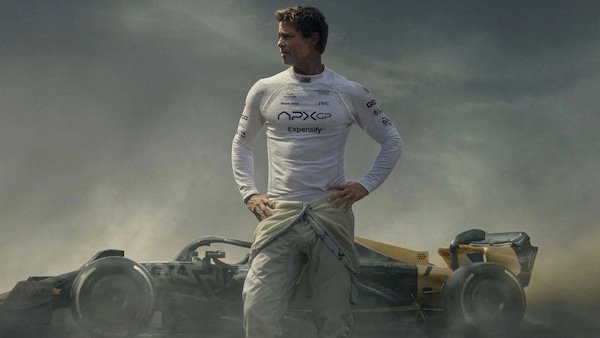
Promo poster for F1.
Last Updated: 05.01 PM, Jun 27, 2025
I HAVE THIS VIVID IMAGE of the future in my head. It’s a bit like the opening vignettes of Interstellar. People buy tickets and shuffle into a museum. This museum was once an out-of-business IMAX theatre. On its giant screen — a screen that’s alien to an ultra-digitalised planet — rushes of a bygone era flicker to life. There’s a long queue outside a section called “Stardom”. The term is strange and antiquated, like a sound of history that current generations have only heard of. They think it has something to do with space travel; perhaps it does. As the kids take their seats, a curated montage of two ‘old’ titles begins. The crowd goes “ooh” when a dashing chap named Tom Cruise lights up the screen in Top Gun: Maverick; the crowd goes “aah” when a hunky guy named Brad Pitt lights up the screen in F1. The men no longer exist, but these two movies are the closest approximation of a world in which aura mattered. There is polite applause. The guided tour moves on to the next section. Maybe more Jurassic Park than Interstellar.
Snatch, Fury, Once Upon A Time In...Hollywood | Watch these Brad Pitt flicks only on OTTplay Premium.
Joseph Kosinski, the director of both Top Gun: Maverick and F1, knows what he’s doing. One might assume he’s wistful for the transcendental fame that Cruise and Pitt represent. By pitting their analogue personas against younger and brasher heroes on the biggest screen possible, he has conflated the nostalgia for old-school blockbusters with the nostalgia for pre-social-media celebrity. Their rivals are keypad-tapping successors who don’t get the hype — until they do; it’s a war for relevance, not victory. One might even say F1 is a spiritual sequel to Maverick, where Pitt’s character — a combative veteran who comes out of motor-racing wilderness to mentor a prodigy in a crisis-stricken team — becomes a celebration of yore. But once the rose-tinted glasses are off, it’s the extinction of stardom that looms large in Kosinski’s filmmaking. It’s not immortality but mortality that shapes his storytelling.

Like Maverick, F1 hits hard because it’s an obituary posing as a hymn. We enjoy the film not just because it’s slick and immersive and entertaining, but also because it’s designed to make us realise that this is the last gasp of superstardom in an age where influence is a profession rather than a halo. While watching, our joy is laced with a sort of melancholy that comes from knowing this is a generational farewell. Those kids at the museum might never understand the magic of fawning fandoms, tentpole epics and Hollywood summers. It’s hard to explain the ghostly glory of Pitt’s Sonny Hayes ‘arriving’ at a Formula One paddock on foot, twice, like Rocky Balboa sauntering into a Michael Bay setting. It’s harder to explain the go-for-broke sentimentalism of seeing Sonny framing “chaos” as his love language; the meta significance of watching a reckless old-timer put his body on the line to blend in, not stand out; the heroism of willing to forego the binaries of heroism; the intangible stardom of shining so bright that the film can exploit the slipstream.
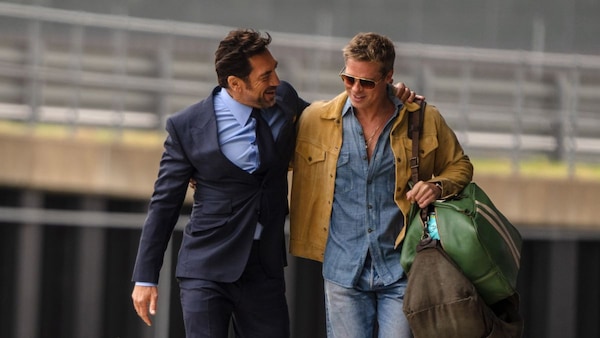
Ironically, F1 leans into the new-age democratisation of a sport. It is made to capitalise on the Drive-to-Survive-ification of modern racing. Over the last 6 years, the popular Netflix docuseries has made the notoriously exclusive sport more accessible than ever before. As a result, this film somehow marries the spectacle of blockbuster escapism with the sobriety of real-world stakes. Instead of dumbing down the boom-or-bust template, it trusts the casual viewer to get the intricacies of success and failure in Formula One. Sonny is like a PTSD-afflicted war veteran making an unlikely comeback for his friend and struggling team owner Ruben, but the circumstances are grounded: the last 9 races of the season, every point is like gold-dust, and the underdogs don’t have the resources. The idea of winning is recalibrated: a top-10 finish is the goal, and jobs are to be saved. It’s not as basic as overtaking the faster drivers; Sonny’s wild plan to crash repeatedly and bring out the safety car to slow down the race for his rookie teammate Joshua is a technical one. The cockpit shots, the endurance of the narrative, and the stop-and-start rhythm of the races challenge our notions of how a big, fat summer movie should feel. For every movie trope of a 50-something star waltzing in and out of the driver line-up on a whim (after the premiere, Carlos Sainz confessed “it’s a Hollywood film”), there’s a subplot of a car’s upgrade package being disqualified by the stewards, tyre strategies deciding a race, or a two-faced investor scheming to hijack the team from its heart-on-sleeve owner.
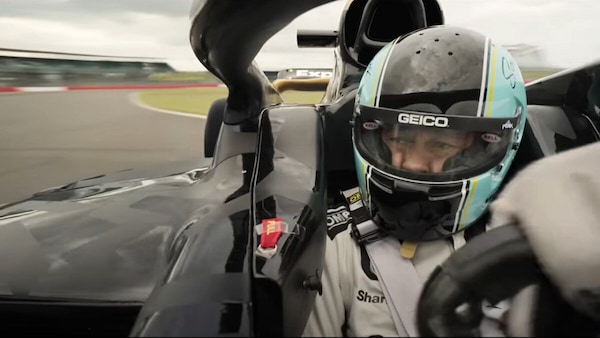
The cameos (the film’s collaborator is the FIA, the sport’s governing body; 7-time champion Lewis Hamilton is a producer) and reaction shots (nice to see former Haas principal Guenther Steiner and his befuddled face) are total crowd-pleasers for the Drive to Survive demographic. But there’s also a fair bit of meat for the eye-rolling purists like myself who think “Perez? He’s no Barrichello or Massa”. Sonny’s past harks back to his time as the heir-apparent to none other than Ayrton Senna. The accident that derails his career is a haunting ode to the fatal Senna crash in 1994: the cockpit-camera, the hum of the engine, the ominous buildup, the ‘missed’ turn. A shocking mid-film accident is inspired by the “Man on Fire” miracle involving former driver Roman Grosjean at the 2020 Bahrain Grand Prix: right down to the hand burns and the pull from the burning wreckage. The Abu Dhabi finale shadows the patterns of the epic 2021 finale, where reigning champion Hamilton was denied by Max Verstappen during a last-lap shootout.
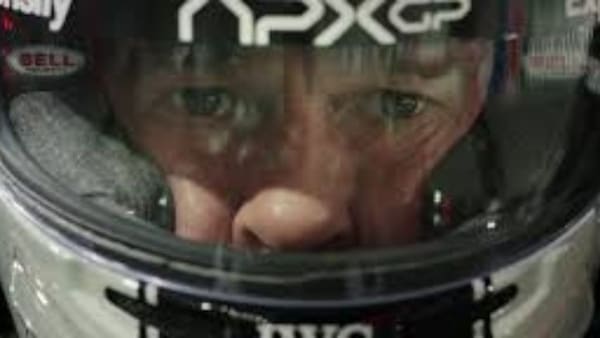
The film’s fusion of fantasy and history reflects its mix of new and old. Hans Zimmer’s score, for instance, goes all electro-beats when Joshua and his contemporaries are on screen, but it invokes Zimmer’s own string-heavy classics from the period F1 thriller Rush (2013) and even Pearl Harbor (2001) when Sonny is in crisis or conflict. The climax is a little surprising, especially after much of the film spotlights Sonny’s transformation from lone wolf to ballsy martyr. But if you zoom out and remember that this is a quasi-biopic of an ageing star — and F1 is only the medium — then it perhaps cuts muster. Pitt delivers a familiar Moneyball-like turn: his swag and Americanism are more performative than Cruise’s, and it’s hard to see the toll of physicality on his journey. His opaque masculinity is a strength and a flaw, but it’s also the point of a film staged to ‘expose’ him. There’s a touching sense of connection between performer and character: Sonny claims he’s not in it for the money or fame, but for the love of racing. He simply likes to drive and survive. In a Challengers-coded arc, he yearns to feel that elusive moment of prayer in the cockpit — “like I’m flying” — decades after he first felt it. Like an artist on a quest for alignment, not perfection.
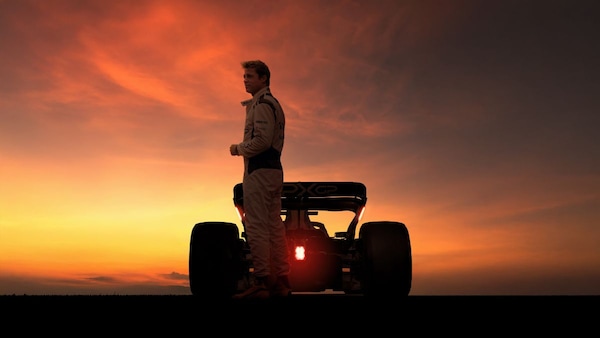
Sonny’s second innings in F1 brings to mind tennis player Andy Murray’s post-2017 stretch until his retirement last year: a phase where, unburdened by the pressure of legacy and expectations, a former prodigy and his wounded body played on like a champion reclaiming a lost childhood. He became a striver in pursuit of anonymity — a career in reverse — and the quest to win again became an excuse to experience the sport away from the trappings of destiny. You could tell that, in some moments, he was “flying” like the old days, and the results were inconsequential. The concept of Sonny Hayes is similar: a fading icon rediscovering the struggle — and appreciation — of acting. And a director reframing the twilight of stardom. When those futuristic museum-goers cruise out after a day of jumping back in time, there will be a pit in their stomach. The summers of 2025 and 2022 will have become core memories. After all, F1 is the movie equivalent of grieving an epoch before it ends.
